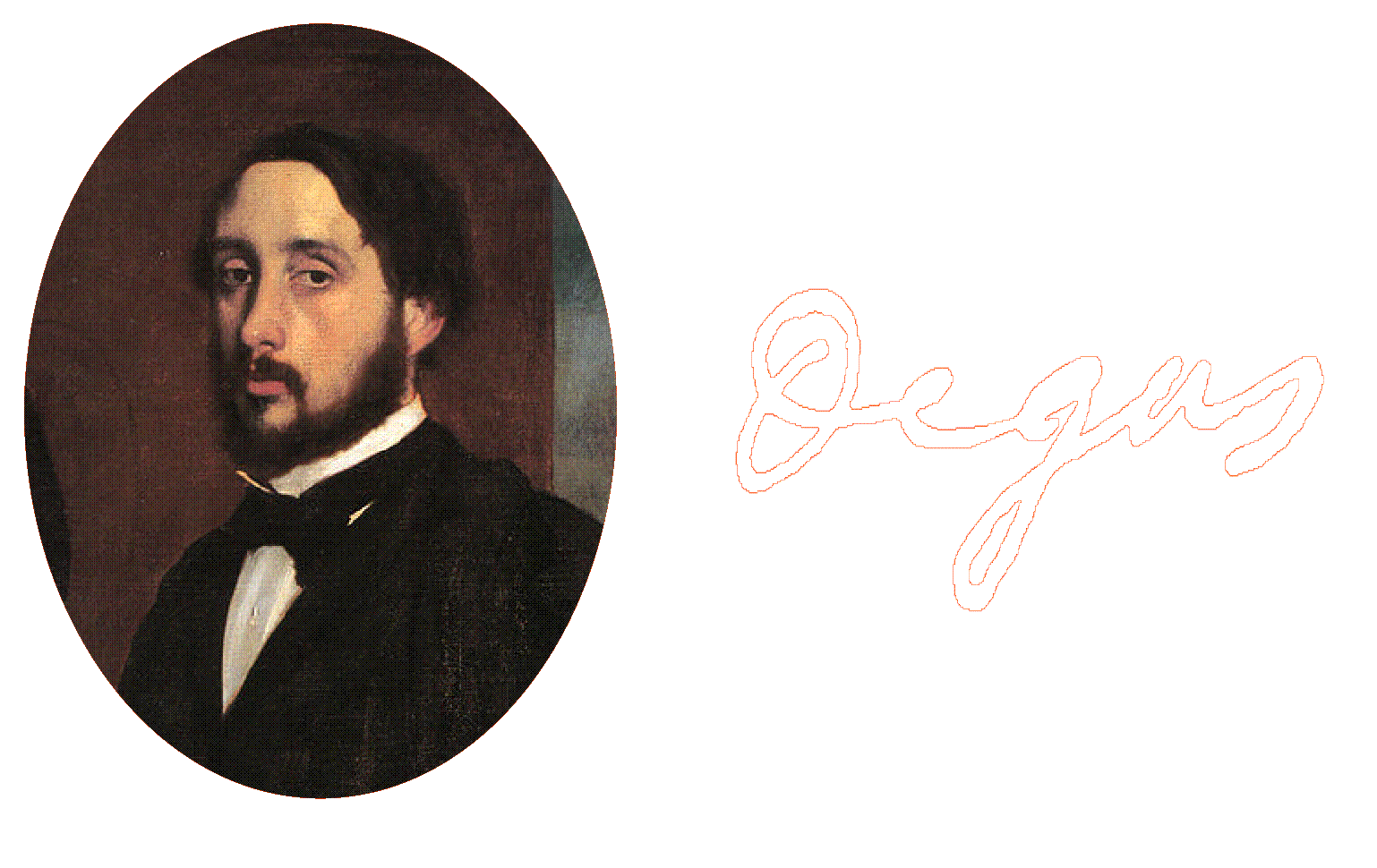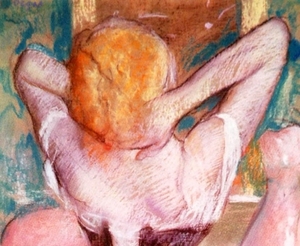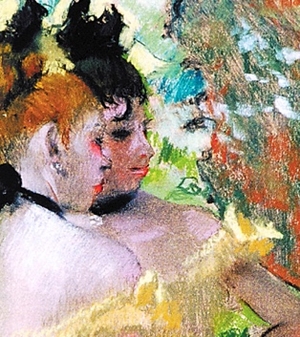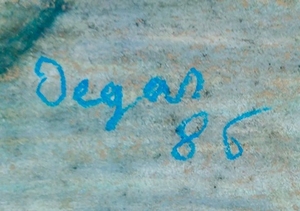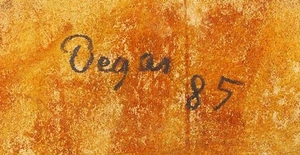Eloge du Maquillage, recently discovered pastel by Degas authenticated by Michel Schulman
Comparisons, Analyses, and Expertise
Edgar Degas and Spain
The origin of pastel Eloge du Maquillage
Comparison, analysis and expertise
We now address the question of its expertise and authenticity as a Edgar Degas artwork. We will follow various technical steps, preceded by a brief historical reminder of the brothels that marked the artist's life around 1875-1880.
While Degas and Toulouse-Lautrec are certainly the most famous painters of brothels, they are not the pioneers. As Catherine Authier writes, "Constantin Guys (1802-1892) was indeed the first to take an interest in them in his time, a controversial subject in which he perceived a certain beauty and above all a means of treating the nude with real novelty." (Catherine Authier, Les maisons closes, Histoire par l'image, January 2016: histoire-image.org/etudes/maisons-close). This subject was taken up in various forms — caricatures, newspaper illustrations, for example — by Gavarni, Forain, and Steinlen.
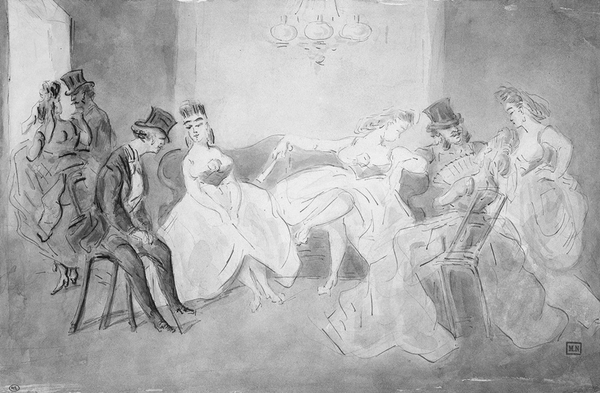
At the time of Degas's death in 1917, about fifty monotypes and monotype pastel works depicting scenes from brothels were discovered in his studio, which he saved despite hardly showing them to anyone.
To our knowledge, Degas's letters do not mention his forays and brothel visits, the true motivations of which remain unknown. This parenthesis in the artist's life has often been analyzed, with voyeurism being cited as the most plausible explanation. However, our intention here is not to delve into its meaning - intimate relationships, emotional and/or sexual impulses - topics often addressed by art historians, which even became the subject of thematic exhibitions such as Bordell und Boudoir at the Kunsthalle Tübingen in 2005, and partially discussed in 2011-2012 in the exhibition catalogue Degas et le nu at the Museum of Fine Arts in Boston and the Museum of Orsay in Paris.
It is widely accepted that Degas's visits to brothels date back to the mid-1870s. As stated in the 1988-1989 exhibition catalogue held in Paris and New York: "Everything indicates that the artist did not have a mistress after the 1870s and, despite his unusually stiff demeanour, he surprised his models with his exemplary manners." Degas's attitude was interpreted and commented on differently. "Camille Mauclair and especially Denis Rouart will give rise to the idea of a Degas haunted by sexuality," as stated in the 1988-1989 exhibition catalogue. And it continues: "Eugenia Parry Janis and Françoise Cachin [through their] important works shed new light on the entirety of this [monotype] production."
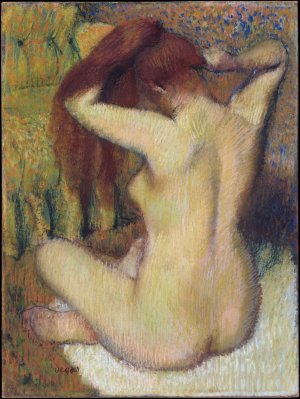
Metropolitan Museum of Art, New York (MS-1380)
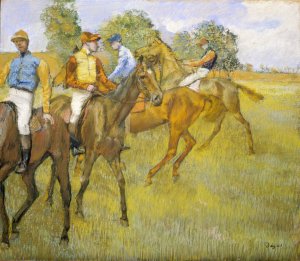
Cleveland Museum of Art (MS-2425)
Other works - of equal importance - are the pastel works done not on paper but this time on cardboard, like Éloge du Maquillage. Among these pastels, we will mention: Avant la course, 1883, Cleveland Art Museum (MS-2425), Femme à sa toilette essuyant son pied gauche, Orsay Museum, 1886 (MS-1232), and finally Femme à sa toilette, 1880, Fondation Bemberg, Toulouse (MS-1117). These are just a few examples that show that by diversifying the media, Degas was undoubtedly seeking different effects and renderings.
The theme of Degas's brothels repeatedly inspired Picasso, who passionately collected Degas's monotypes. This subject was also revisited by the exhibition Picasso Looks at Degas at the Sterling and Francine Clark Art Institute, Williamstown, in 2010 and at the Picasso Museum, Barcelona, in 2010-2011. Elizabeth Cowling dedicates a fascinating article to it: Picasso and Degas's Brothels.
From monotype to pastel, consider the example of La fête de la patronne, a cross between the pastel on a monotype in the Picasso Museum and the monotype in which Degas repeated, in detail, the gesture of the standing woman placing her hand on the head of the patron saint.
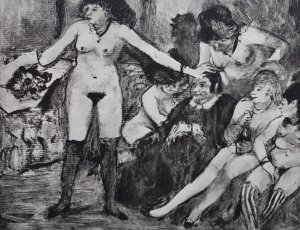
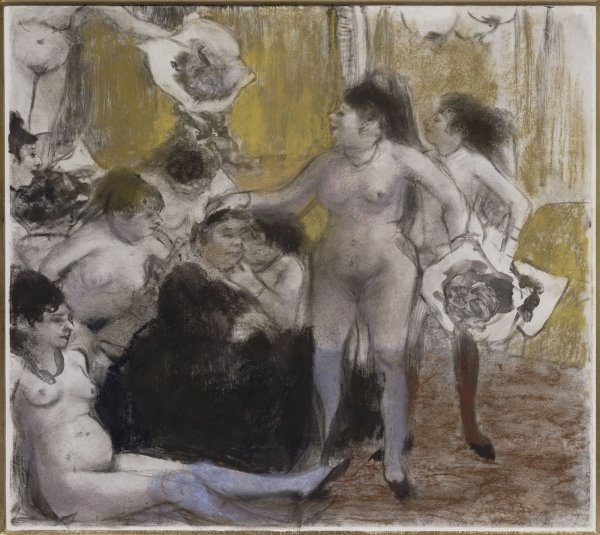
musée Picasso, Paris (MS-954)
It was in 1876-1877 that La fête de la patronne became perhaps Degas's most famous pastel on monotype depicting brothels. Other important works also left their mark on this unexpected chapter of Degas, such as Femme nue accroupie de dos pastel on monotype with black ink on paper from the Orsay Museum (MS-1235), Scène de bordel (MS-953), previously in the Ann and Gordon Getty collection, recently sold at auction, and finally Femme nue se poignant, also a pastel piece on paper from the Metropolitan Museum of Art, New York (MS-1380).
From Monotype to Pastel
In his article Les Bordels de Degas: Voyeurisme et Idiologie, Charles Bernheimer writes: "Degas used the medium [monotype] not only for himself but also as a basis for chiaroscuro, a tonal map for later elaboration in pastel and gouache". [Representations, University of California Press, Berkeley, 1987-10, vol. 20, p. 160]. See also: jstor.org/stable/3051224].
This observation applies more than ever to the "transposition" of the monotype Le Client sérieux to the pastel Eloge du Maquillage.
Among the works involved in Degas' new artistic path is Le Client sérieux, located at the National Gallery of Canada, Ottawa, a monotype that we will compare to the pastel pieces on cardboard that we are currently examining.
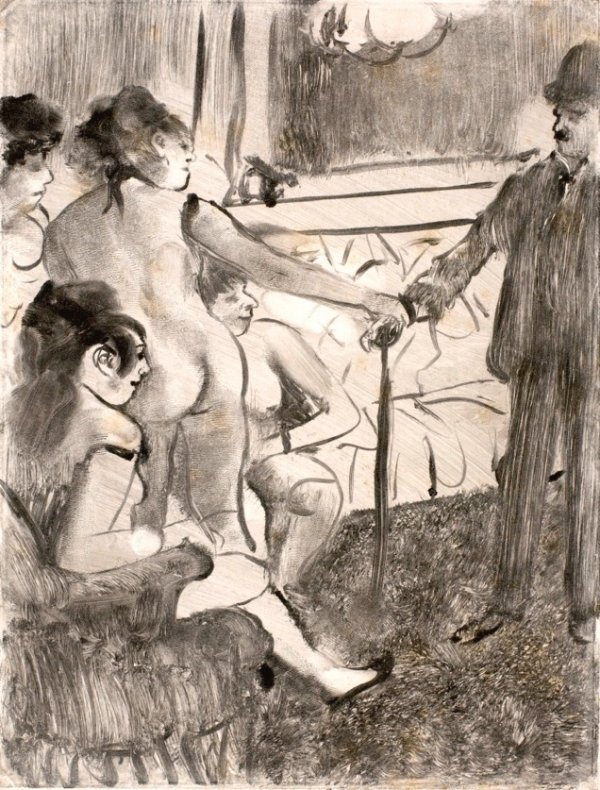
In Éloge du Maquillage, Degas takes the upper left part of the monotype Le Client sérieux from Ottawa to compose his pastel, focusing on the back of the woman on the right and the two faces. Éloge du Maquillage is, so to speak, a variation of the Ottawa monotype.
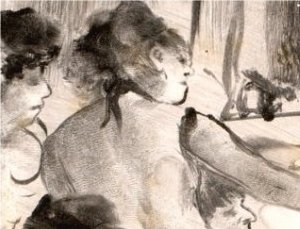
musée des Beaux-Arts du Canada, Ottawa
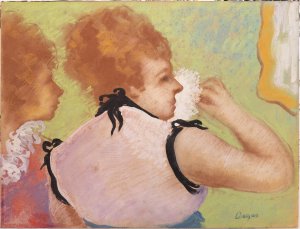
In this way, he moved away from the more general theme of the monotype, namely the client and his gaze, to focus more on the fleshy back of the woman in the centre.
The black ribbon or choker — which often adorns the Degas nudes, singers, and dancers — is found in both of the above works. In the pastel piece, the choker contrasts with the woman's fair skin. Another similarity is the abundant hair of both women, with the hair of the woman on the right reminiscent of his numerous women from the café pieces.
Among the similarities between the pastel work and the monotype, one also notices the mirror with the orange frame in the pastel, the distortion of which is echoed by a slight ripple on the left side of the monotype.
Comparing Pastel Works
To evaluate Éloge du Maquillage, we have selected several points of comparison with certain works by Degas, including:
Technique :
We count some forty pastels enhanced with gouache on paper or cardboard in the current Degas corpus, which can be easily consulted in this catalog raisonné.
In-depth technical and pigment analyses were carried out at the L & R laboratory in Madrid, which produced a report dated July 25, 2023. The report confirms that the work dates from the second half of the 19th century, and that the signature was made at the same time.
Analyses reveal two slight, later restorations, with low titanium content, on the necks of the two women and the houpette, in cracked white gouache highlights, i.e. later, on a first layer of zinc white gouache originally applied by Degas.
Colour:
There are identical tones between Éloge du Maquillage, La Toilette and Danseuses en jaune. One will notice the nearly horizontal pastel strokes in all three works.
Depiction of the hand:
In Degas's work, hands are often distorted or even very clumsily represented. How he treated the hands surprised us since Degas was an unconditional admirer of Jean-Dominique Ingres, as evidenced by his early works. These distortions are noticeable not only in his drawings and pastels but also in his paintings. In Éloge du Maquillage, the hand gets lost in the powder puff and resembles the hands in the works below:
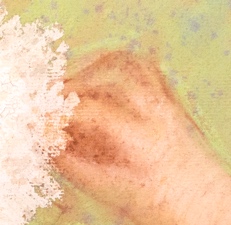
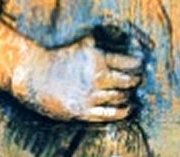

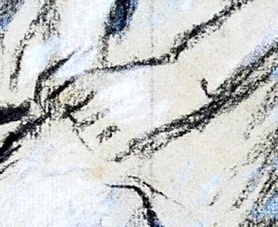
Hair:
Among the comparisons, we finally note the abundant hair of the woman in the centre in Éloge du Maquillage. It is with La Chanson du chien that we can make the most obvious comparison between the shapes of the hairstyles and their colours.
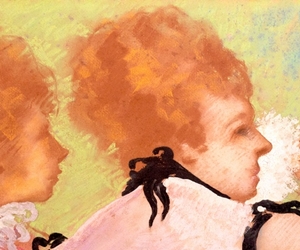
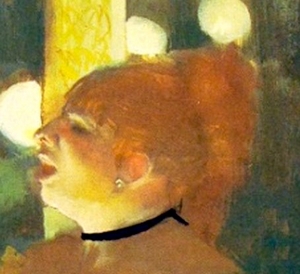
Perenchio Foundation, Photograph by Fredrik Nilsen
Signature:
In the article recently published regarding Degas's signatures, we have selected more than 66 different signatures among Degas's paintings, pastels, and drawings. For comparison purposes, we have identified two signatures corresponding to the signature on our pastel Éloge du Maquillage.
Publication : 25-05-2024
